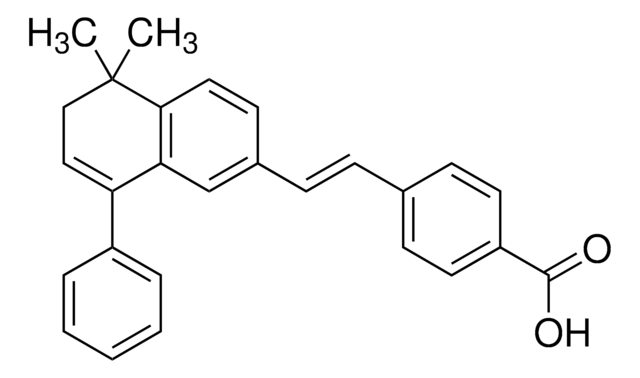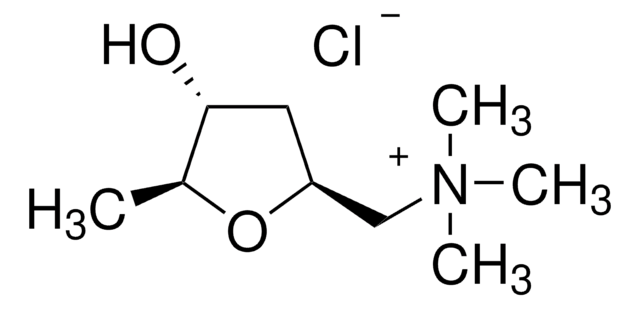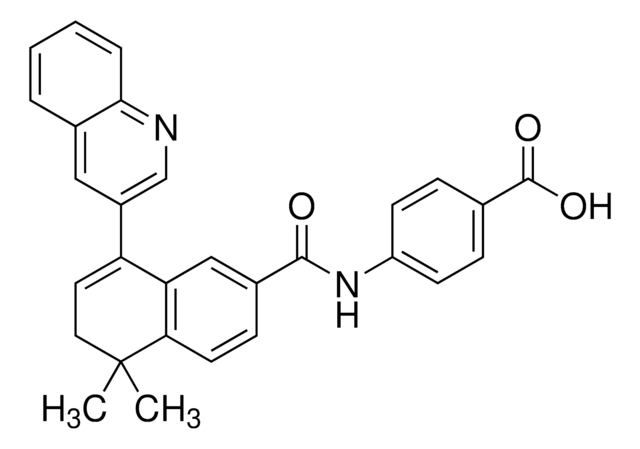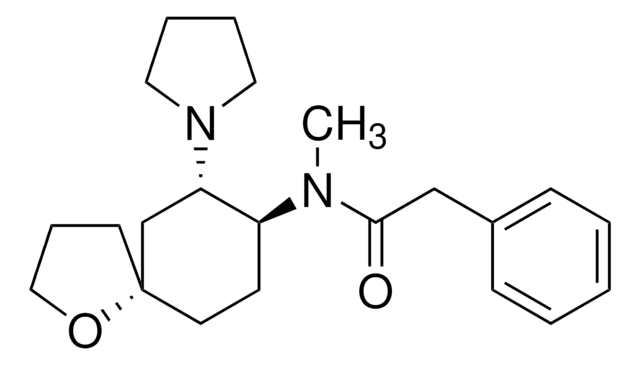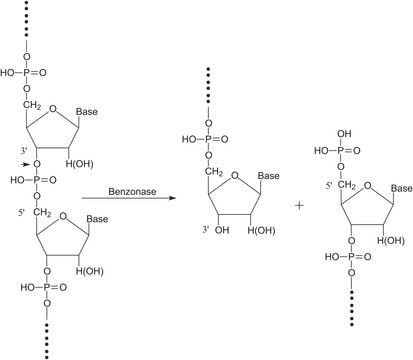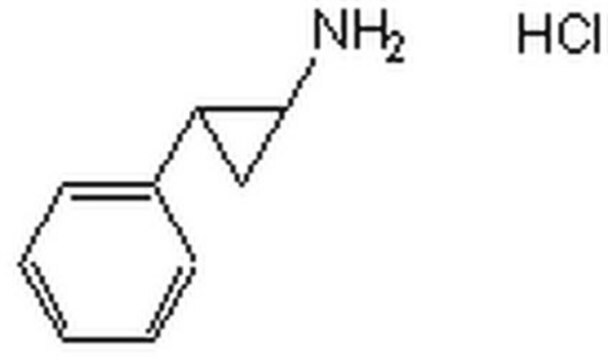O0766
ONO-RS-082
≥97% (HPLC)
Synonim(y):
2-(p-Amylcinnamoyl)amino-4-chlorobenzoic acid, 4-Chloro-2-[[1-oxo-3-(4-pentylphenyl)-2-propen-1-yl]amino]-benzoic acid
About This Item
Polecane produkty
Próba
≥97% (HPLC)
Formularz
powder
okres trwałości
Do not freeze
warunki przechowywania
protect from light
kolor
white
rozpuszczalność
DMSO: ≥20 mg/mL
temp. przechowywania
room temp
ciąg SMILES
Clc1cc(c(cc1)C(=O)O)NC(=O)\C=C\c2ccc(cc2)CCCCC
InChI
1S/C21H22ClNO3/c1-2-3-4-5-15-6-8-16(9-7-15)10-13-20(24)23-19-14-17(22)11-12-18(19)21(25)26/h6-14H,2-5H2,1H3,(H,23,24)(H,25,26)/b13-10+
Klucz InChI
MDVFITMPFHDRBZ-JLHYYAGUSA-N
Działania biochem./fizjol.
Cechy i korzyści
Hasło ostrzegawcze
Warning
Zwroty wskazujące rodzaj zagrożenia
Zwroty wskazujące środki ostrożności
Klasyfikacja zagrożeń
Aquatic Acute 1 - Aquatic Chronic 1
Kod klasy składowania
11 - Combustible Solids
Klasa zagrożenia wodnego (WGK)
WGK 2
Temperatura zapłonu (°F)
Not applicable
Temperatura zapłonu (°C)
Not applicable
Wybierz jedną z najnowszych wersji:
Certyfikaty analizy (CoA)
Nie widzisz odpowiedniej wersji?
Jeśli potrzebujesz konkretnej wersji, możesz wyszukać konkretny certyfikat według numeru partii lub serii.
Masz już ten produkt?
Dokumenty związane z niedawno zakupionymi produktami zostały zamieszczone w Bibliotece dokumentów.
Produkty
Phospholipase A2 (PLA2) designates a class of enzymes that hydrolyze the sn-2 ester of glycerophospholipids to produce a fatty acid and a lysophospholipid. It has become clear that some of these enzymes liberate arachidonic acid in mammalian cells for the biosynthesis of eicosanoids, and thus there has been considerable interest in developing PLA2 inhibitors. Based on amino acid sequences, there are now more than 12 distinct groups of mammalian PLA2s, as well as many non-mammalian forms, all of which have been classified into 14 distinct groups with many subgroups.
Nasz zespół naukowców ma doświadczenie we wszystkich obszarach badań, w tym w naukach przyrodniczych, materiałoznawstwie, syntezie chemicznej, chromatografii, analityce i wielu innych dziedzinach.
Skontaktuj się z zespołem ds. pomocy technicznej
